What is it like to live and work in the historic centre of the county? Visitors to the Castle often focus on the stunning architecture and beautiful panoramas. Nevertheless, this unique area is connected to the city through the lives of the people who live and work within the walls of the Castle.
A new photographic exhibition in the Castle garden Bazaar showcases this connection through 27 portraits of individuals who were connected to the Castle directly or through their families.
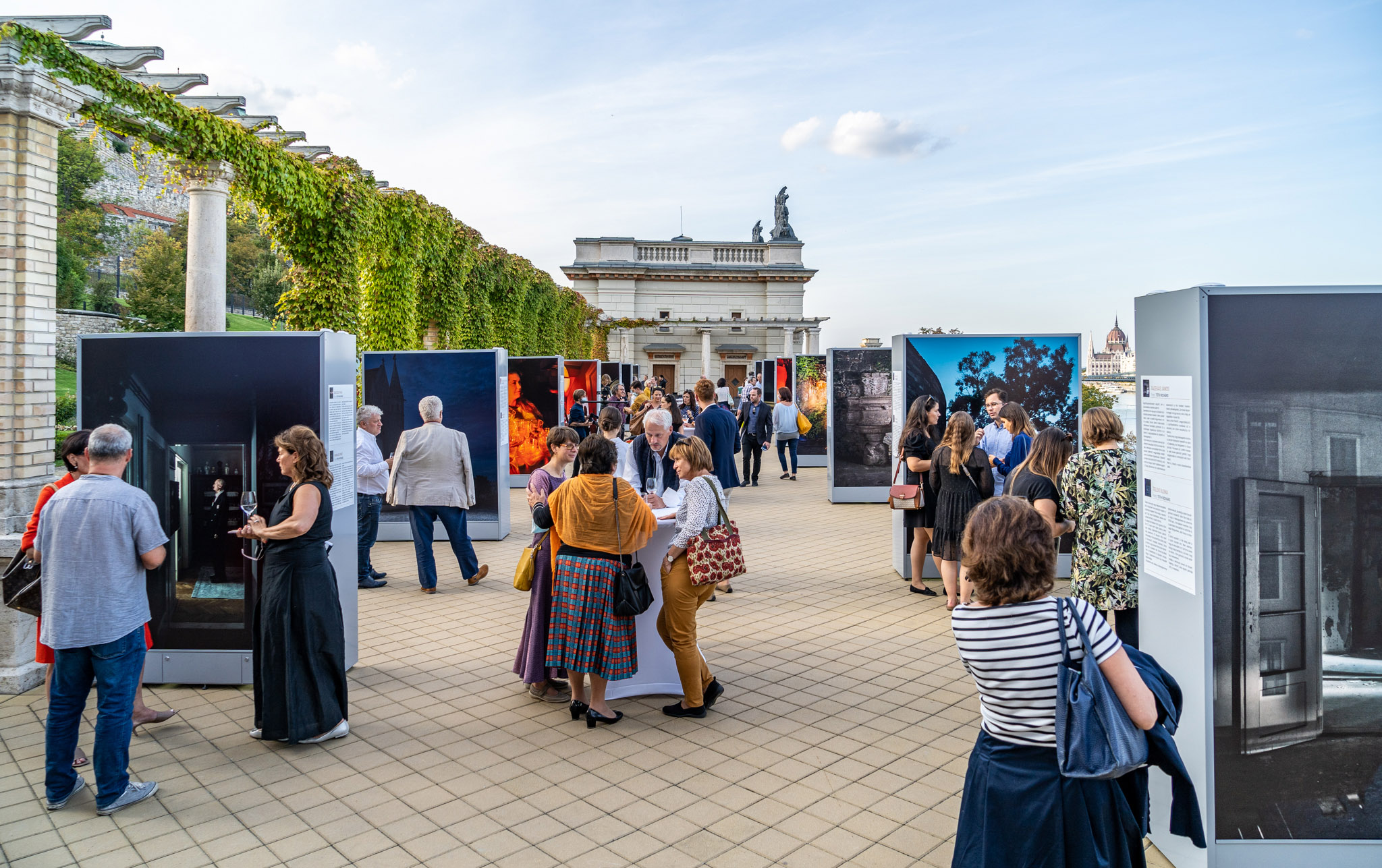 The exhibition on the Southern Panorama Terrace of the Castle Garden Bazaar includes 27 large portraits (Photo: Balázs Both/pestbuda.hu)
The exhibition on the Southern Panorama Terrace of the Castle Garden Bazaar includes 27 large portraits (Photo: Balázs Both/pestbuda.hu)
Kristina Sikota, Deputy CEO, Várkapitányság Nonprofit Zrt, responsible for tourism and culture greeted guests and portrait subjects at the opening, comparing the exhibition to an album she said: "A lively city district lies behind the tourist attractions and sights, the flavour and character of which, have been defined by human lives deeply connected to it. This exhibition is similar to a family album, in which from elders to youths very different personalities appear."
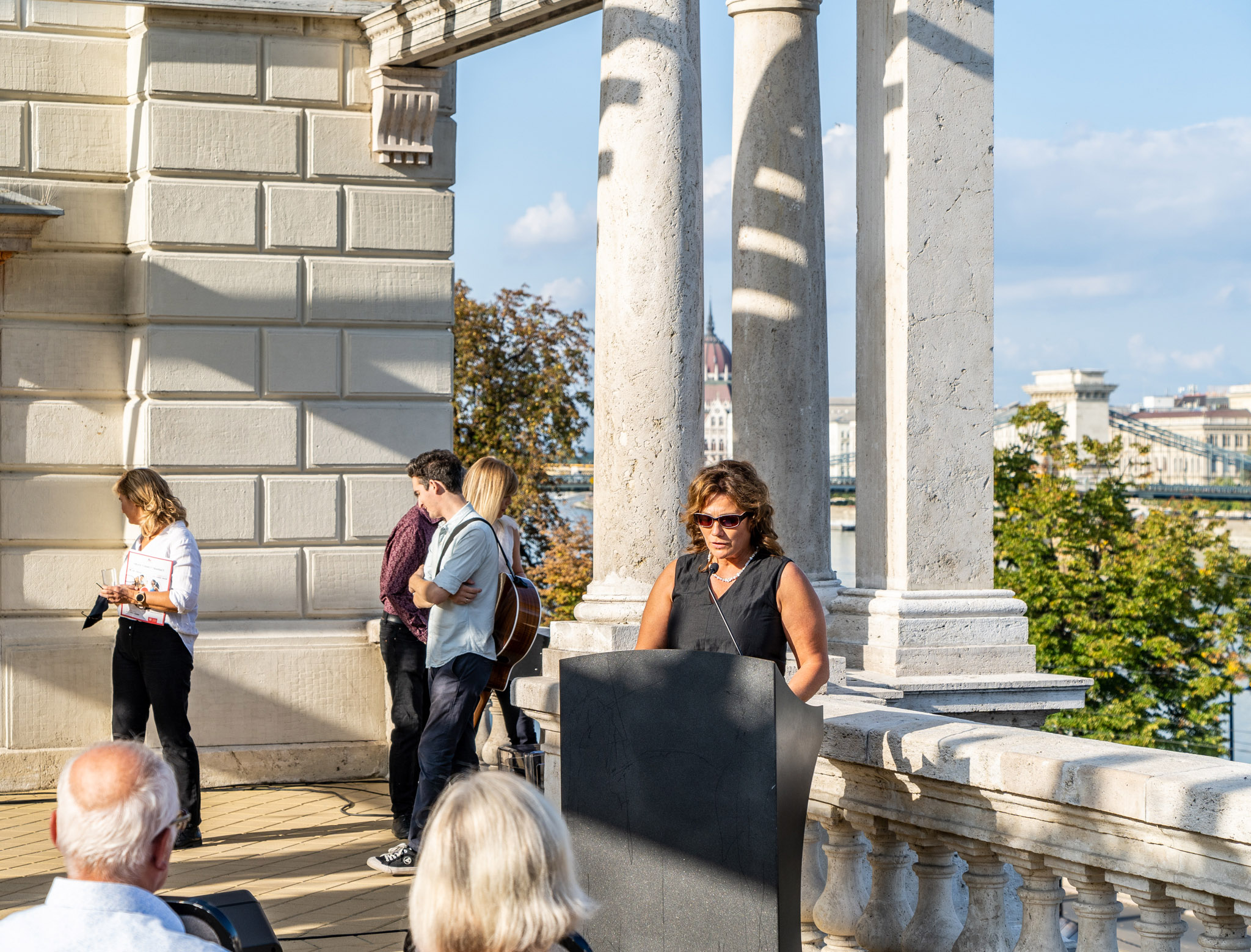
Krisztina Sikota, Deputy CEO of Várkapitányság Zrt. likened the exhibition to a photo album (Photo: Both Balázs/pestbuda.hu)
The Director of the Robert Capa Centre for Contemporary Photography, Orsolya Kőrösi, also added a meaningful thought: everyone is always interested in the secret lives of the houses within the castle wall. The faces of the exhibition give visitors a glimpse of this as the stories of the people in the portraits become the common history of Budapest through their connection to the Castle.
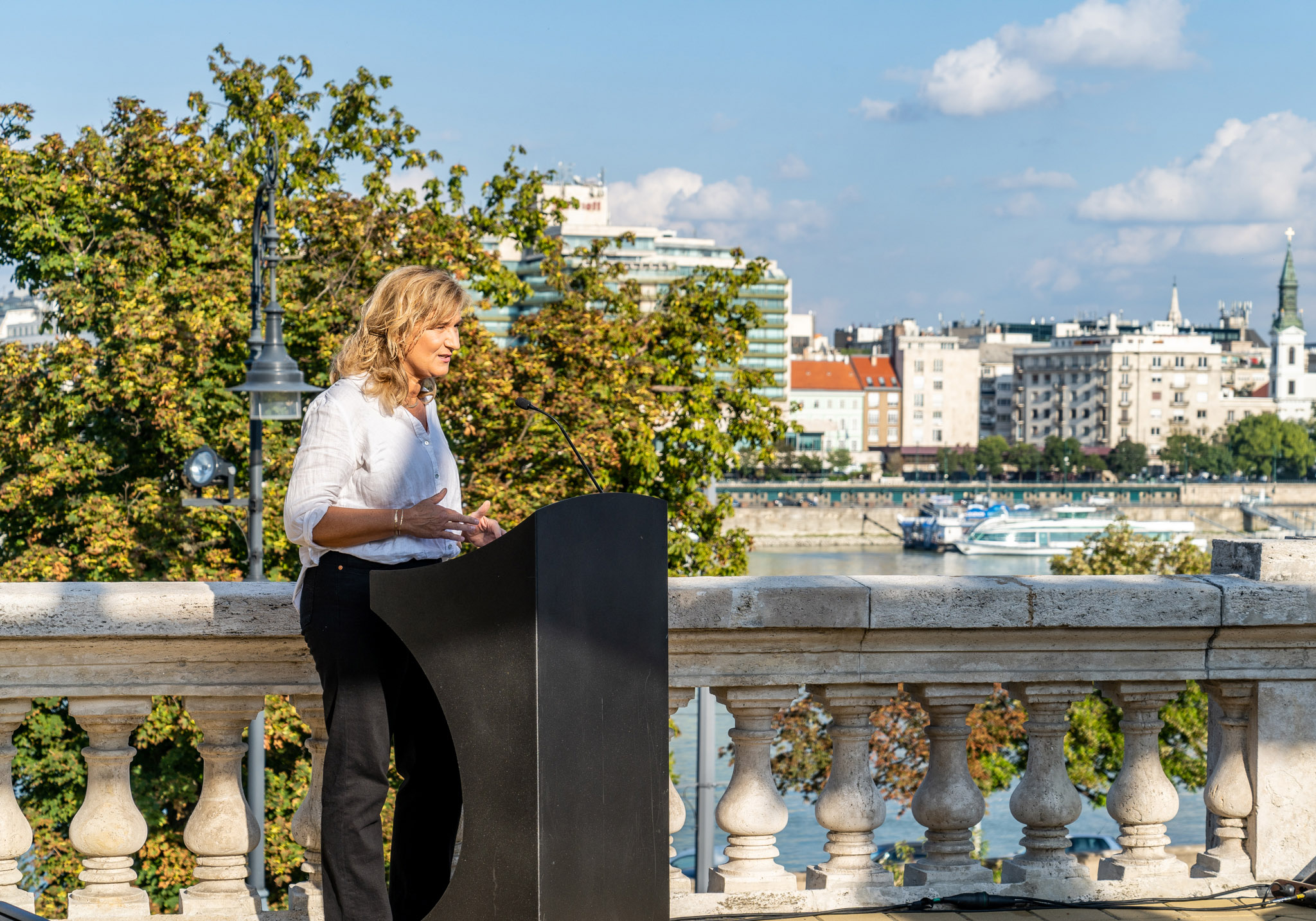
Orsolya Kőrösi, Director of the Robert Capa Centre for Contemporary Photography at the opening event (Photo: Balázs Both/pestbuda.hu)
Gábor Máté, head of the Photography Department of the Moholy-Nagy University of arts added that the size of the portraits is an essential element of the exhibition. The two-metre posters show details that would otherwise remain hidden. In one of the photographs, for example, an entire world, the reflection of the whole room, can be seen in the wine glass held by the 96-year-old Mrs Józef Hazai, Lili Tóth (Hazai Józsefné Tóth Lili). The high level of detail draws the viewer into their reality.
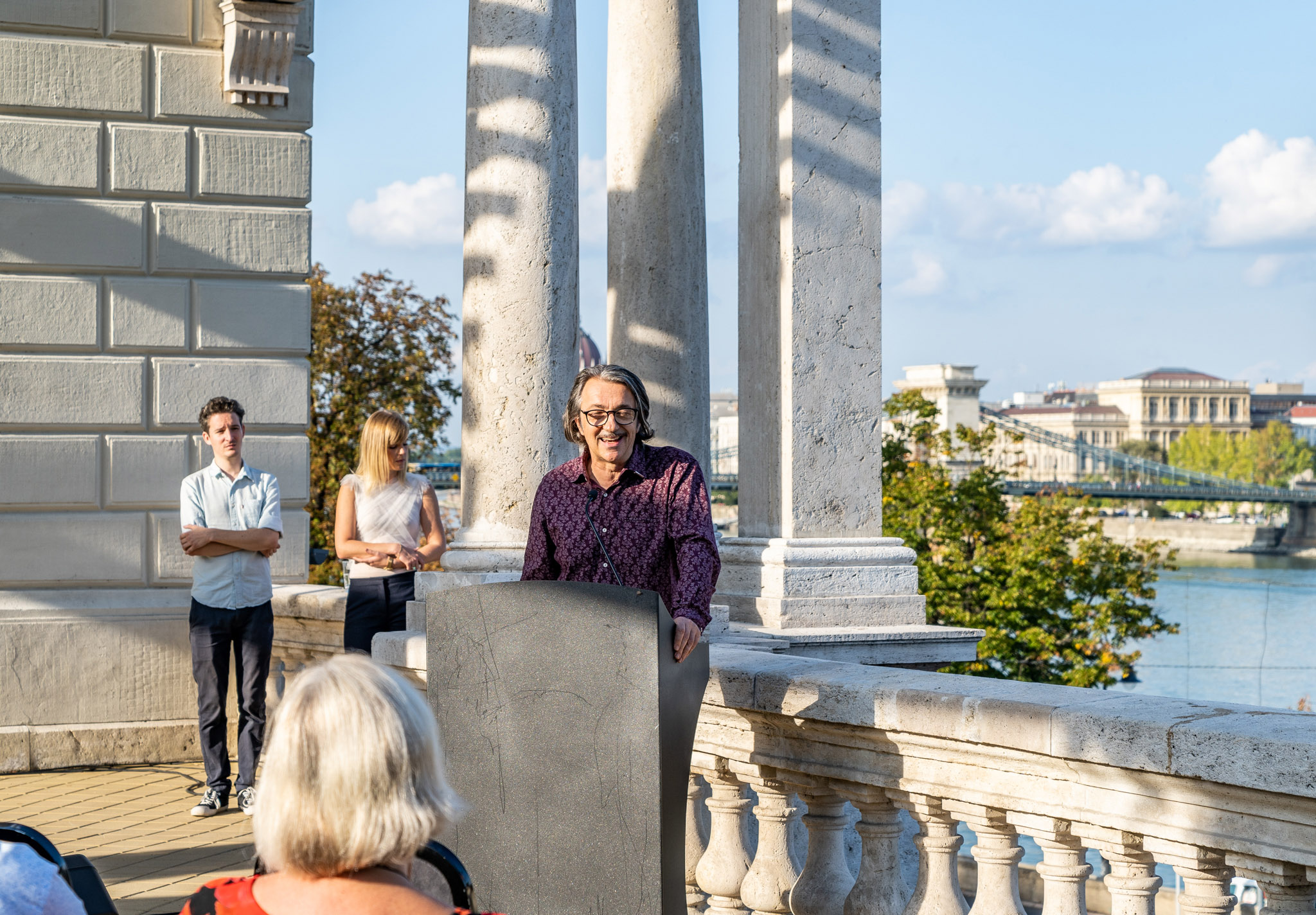
Gábor Máté, head of the Photography Department at Moholy-Nagy University of Arts (Photo: Balázs Both/pestbuda.hu)
Between the speeches of the opening event, Márk Járai (the frontman of Halottpénz) sang songs by Tamás Cseh, a Hungarian singer-songwriter whose love for the Castle District is well known. The songs were in a way reminiscent of the Ifipark (Youth Park) that one operated in the Bazaar, but the songs by Tamás Cseh fit in surprisingly well among the renovated surroundings of the current buildings.
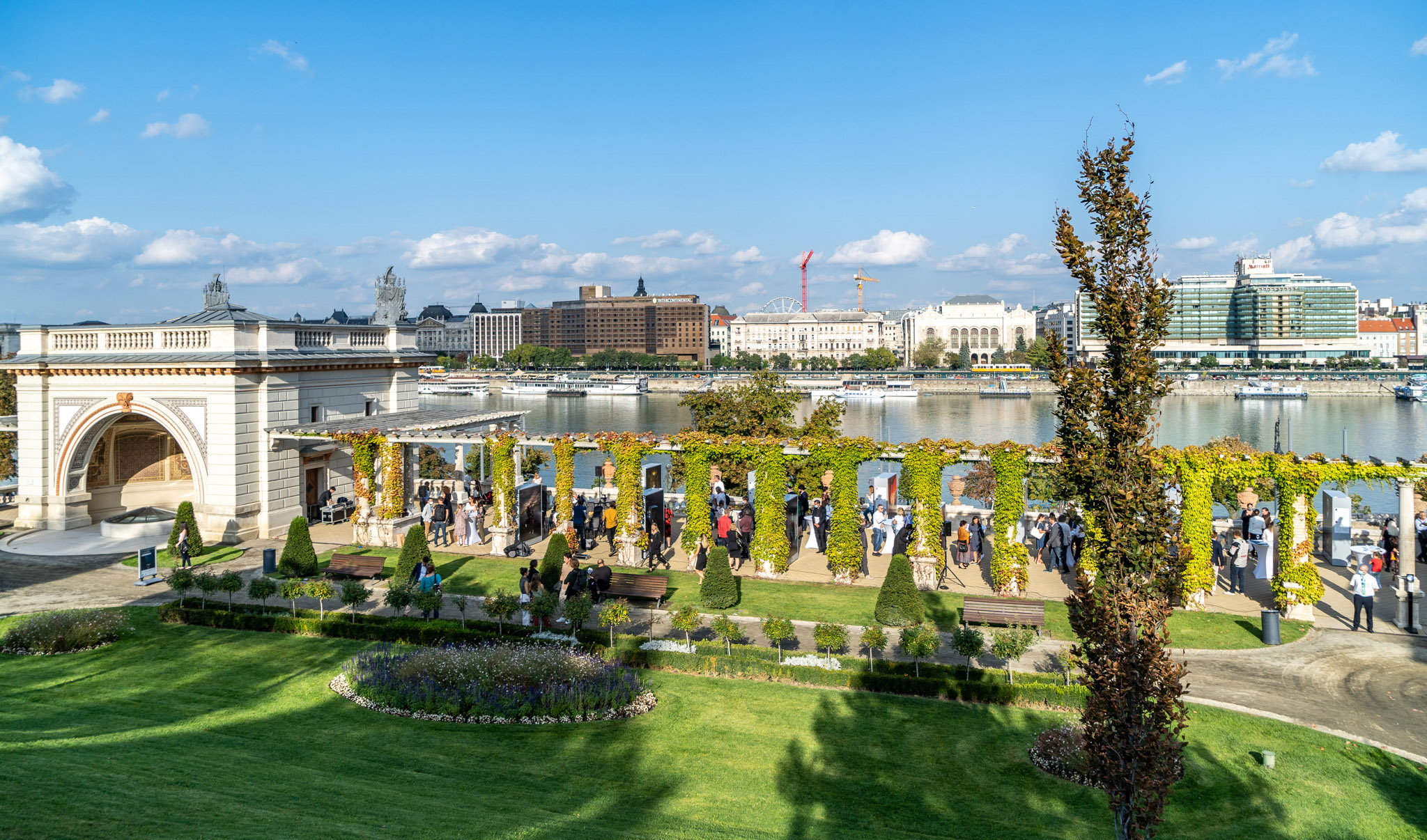
The Castle Garden Bazaar, designed by Miklós Ybl and completed in 1883 is a magical place in itself (Photo: Balázs Both/pestbuda.hu)
There could hardly be a better location for the exhibition. The Castle Garden Bazaar, built between 1875 and 1883 following plans laid out by Miklós Ybl is a sight to behold in itself. The Southern Panorama Terrace has housed the unique exhibition since Thursday.
The exhibition was brought to light through the cooperation of Várapitányság Zrt and Moholy-Nagy University of Arts. Students at the school took 27 large portraits. Entitled, Legends from Buda Castle, the exhibition is about Buda Castle, every photograph in the exhibition is of someone who is connected to the Castle in some way.
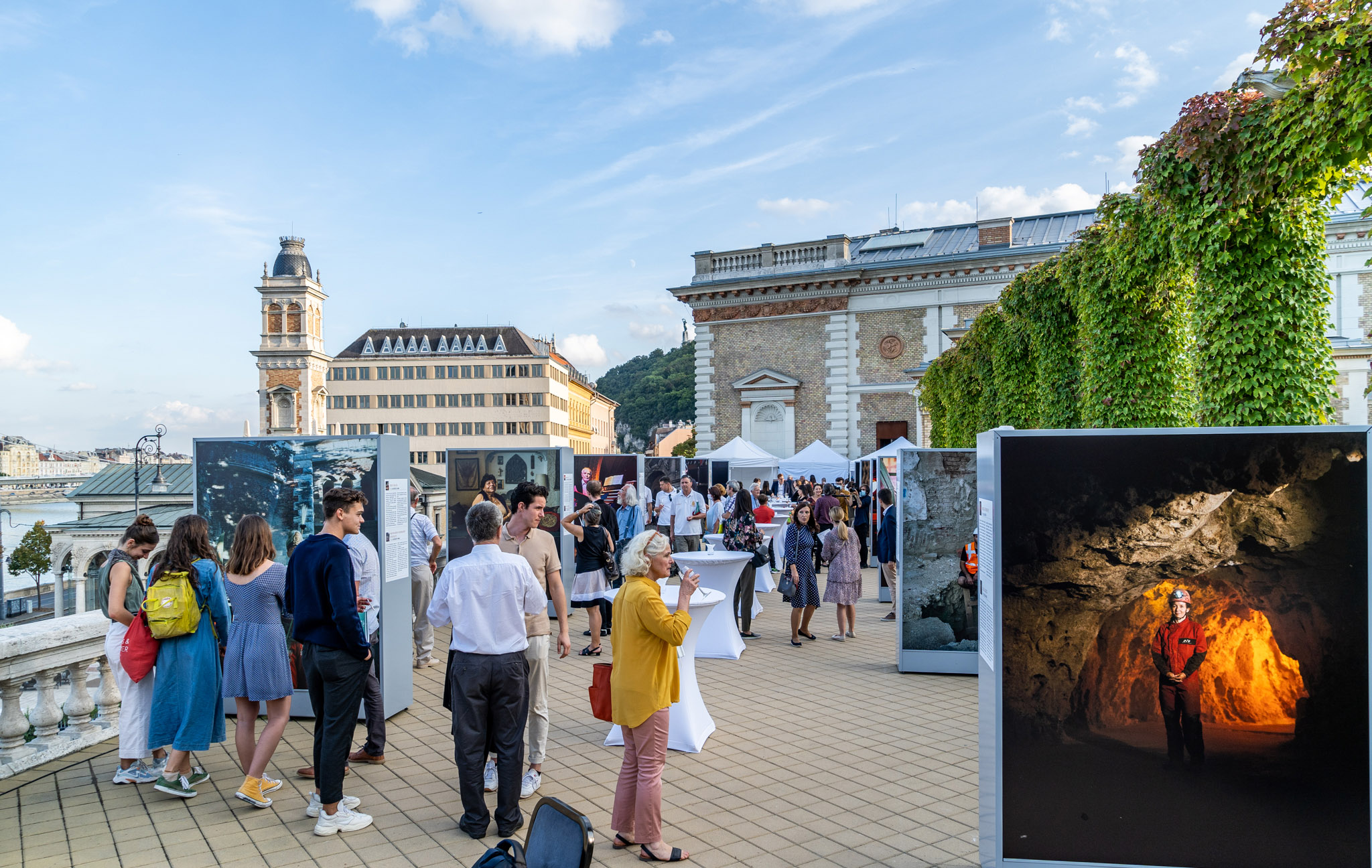
The exhibition is a place of meetings. The past and present, families, friends, the history of the Castle and Budapest come together in this one place (Photo: Balázs Both/pestbuda.hu)
Among them are the members of the Seidl family, who are the descendants of the architect of the Royal Palace of Buda, Alajos Hauszmann (who took over from Ybl, who completed the lion's share of the work, after the old master's death). They were photographed in the recently rebuilt Royal Riding Hall, which was originally designed by Hauszmann. Huszmann's great-grandson, Tibor Seidl and his son, Krisztián are also architects. As they walk through Buda Castle, they can proudly look upon the Royal Palace, the Royal Guardhouse and the Royal Riding Hall, all designed by their forefather.
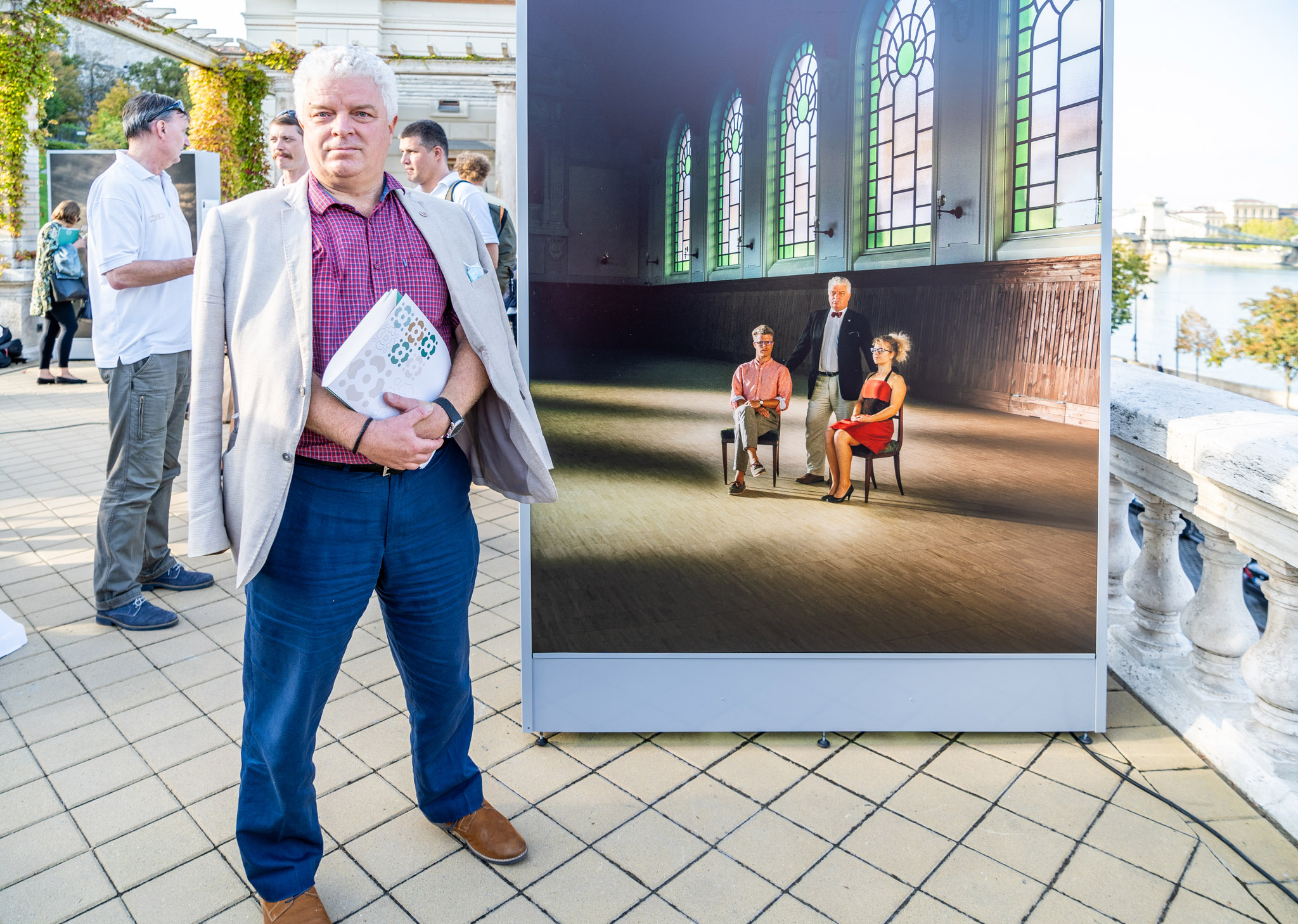
Architect Tibor Seidl, great-grandson of Alajos Hauszmann and his portrait in the recently rebuilt Royal Riding Hall, planned by Hauszmann (Photo: Both Balázs/pestbuda.hu)
One of the largest and most beautiful fountains in the Castle District is the Mátyás Fountain, originally completed in 1904 by Alajos Strobl. The oeuvre of one of Hungary's greatest sculptors is today managed by a foundation set led by five of his grandchildren. One of, pictured in the exhibition, Krisztina Stróbl walks past the works of her grandfather in the Castle every day, as beyond the fountain, the statue of Saint Stephen, beside Matthias Church is also the work of the great artist. The faces of the figures carved into the base of the statue reflect the features of Krisztina's grandfather, aunt, and great-grandmother.
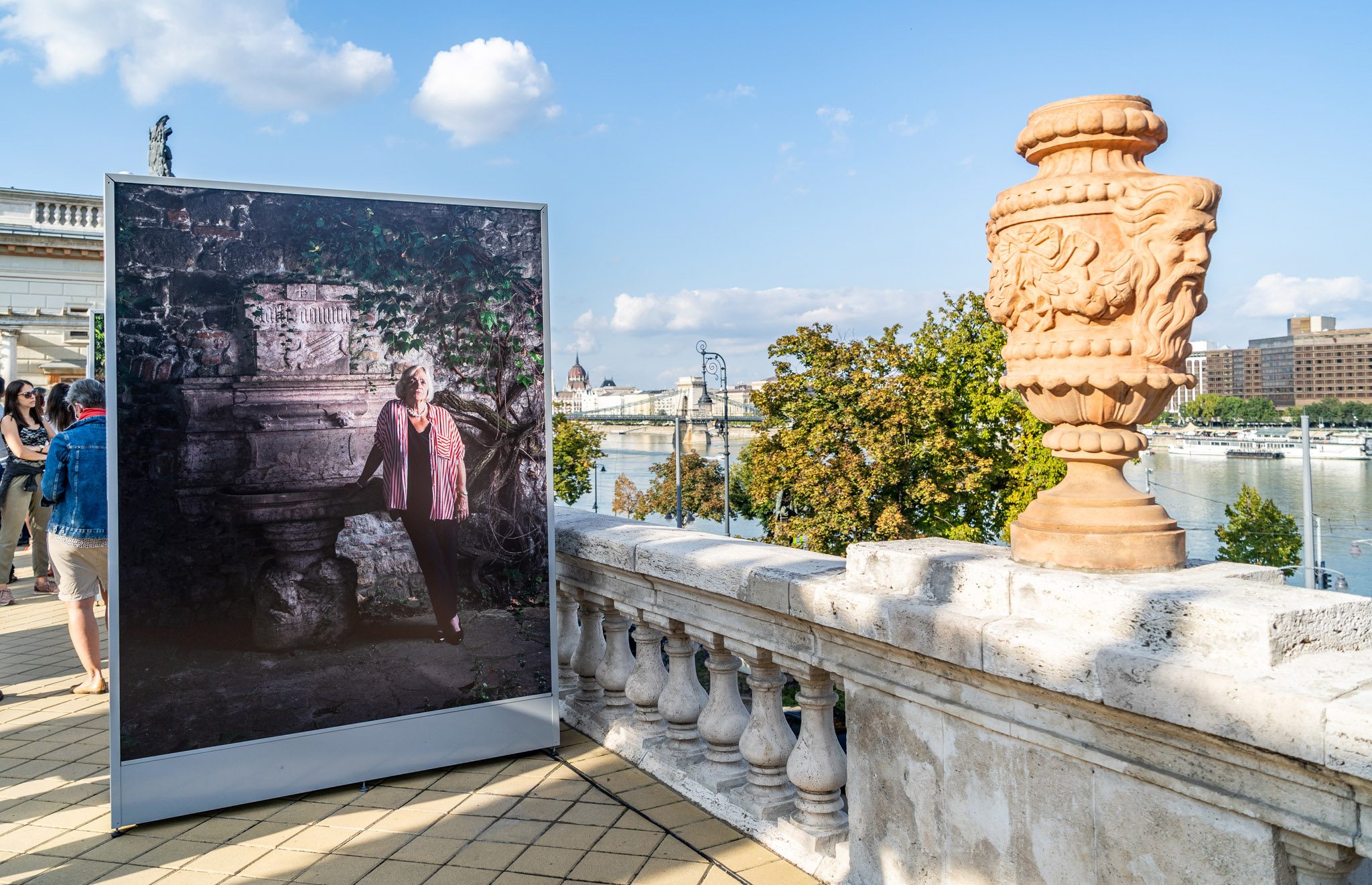
Krisztina Stróbl, a granddaughter of Alajos Strobl, who created the Matthias Fountain and the statue of St. Stephen in front of the Fisherman's Bastion, is also photographed in the exhibition (Photo: Both Balázs/pestbuda.hu)
Several noble families owned palaces or houses in the Castle. The Telekis, for example, owned several, the Edelsheim-Gyulai palace under which their Dísz Square being one of the. In 1956 the family was moved out of its home and eventually fled to Belgium, where one of the subjects of the exhibition, Ilona Teleki, was born. She has since returned to Hungary and fallen in love with the Castle District. She held her wedding here last year and visits the walls often for walks with her husband.
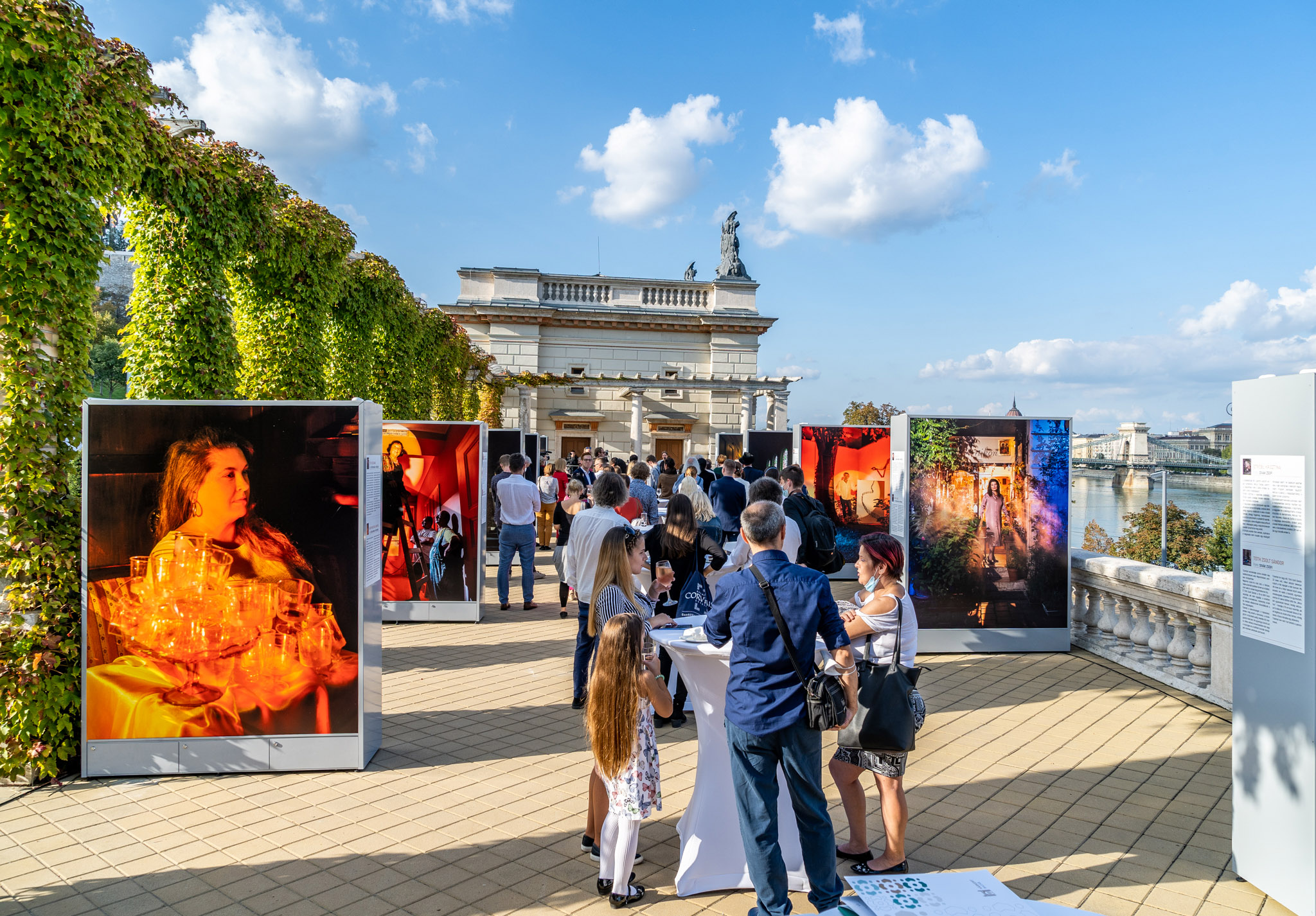
The descendants of well-known and everyday people appear in the photographs (Photo: Both Balázs/pestbuda.hu)
The architectural heritage of Buda Castle casts a spell over people: nowhere else in Budapest can one walk between centuries-old walls, at times standing since the Middle Ages. Visitors will always ask, what lies behind these walls? The residents of the Castle often liken the district to a small town: a town within a city, with clear-cut borders unchanged for centuries, and a lively cultural and community life.
It is little wonder that the people that study and work in this historic atmosphere are also sucked in by the historic atmosphere. István Szakál's family lived in Lovas Street but endured the air raids of World War II in the Hospital in the Rock, where he was eventually born. The family was forced to leave the area, as their flat became uninhabitable due to the destruction of the war. However, their love for the Castle never waned: István Szakál planned three buildings on Iskola Street, where he was once a student.
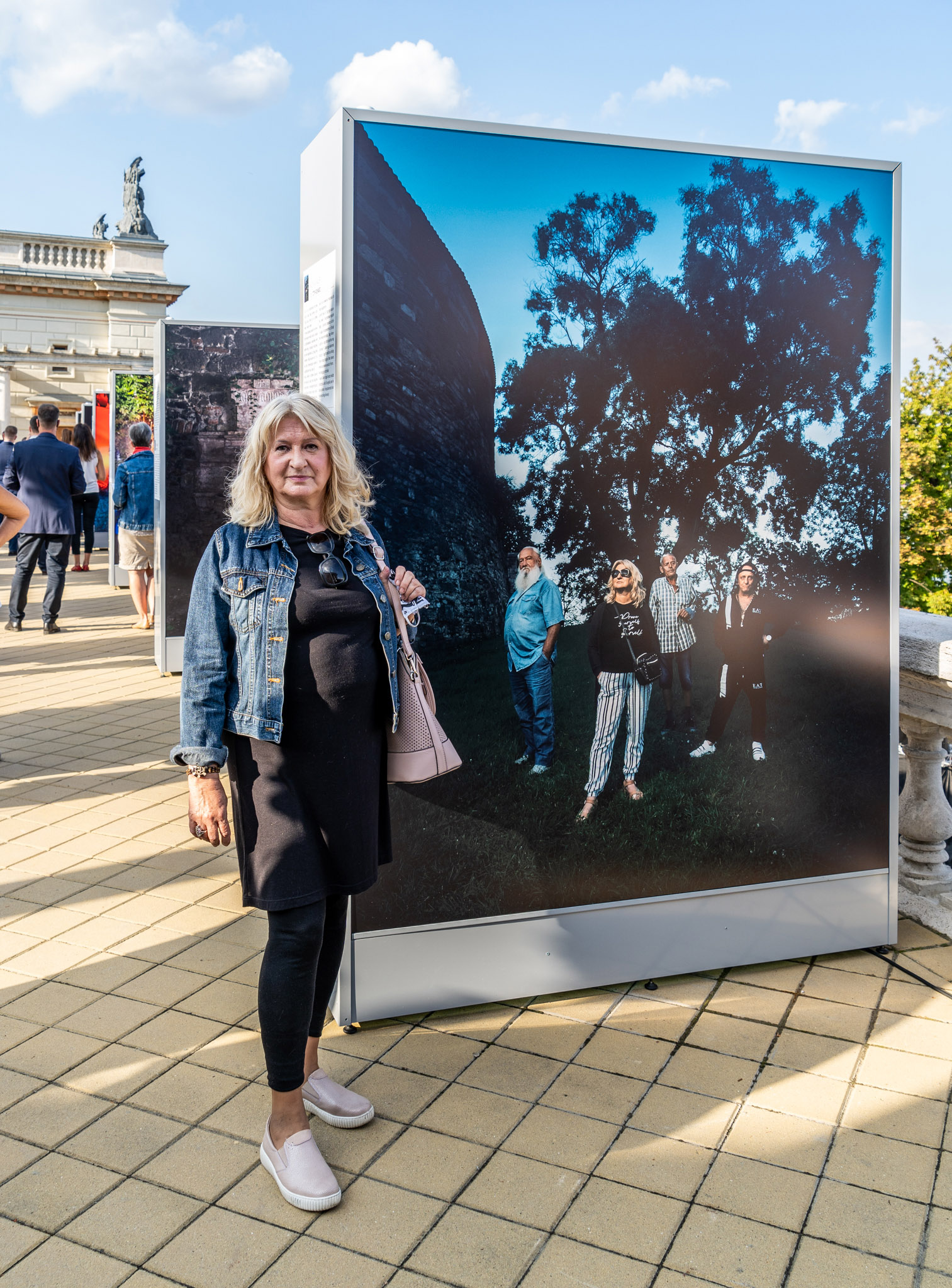
In the times of the Ifipark ('Youth Park'), some people were not let into concerts because of the length of their hair, or the clothes they wore, or for any reason. These youths would listen to the concerts beside the massive Japanese pagoda tree next to the Southern Roundel. They were known as the Nagyfa Galeri ('big tree gallery'), and are also portrayed in the exhibition (Photo: Balázs Both/pestbuda.hu)
Buda Castle is a place where history is not only preserved in the centuries-old walls, storied buildings and stunning works of art but by people themselves. The Legends from Buda Castle exhibition showcases how the district can define the lives of multiple generations.
The open-air exhibition is open to visitors on the Southern Panorama Terrace until 15 November 2020, every day between 6 am and midnight.
Cover photo: New exhibition opens in the Castle Garden Bazaar (Photo: Balázs Both/pestbuda.hu)

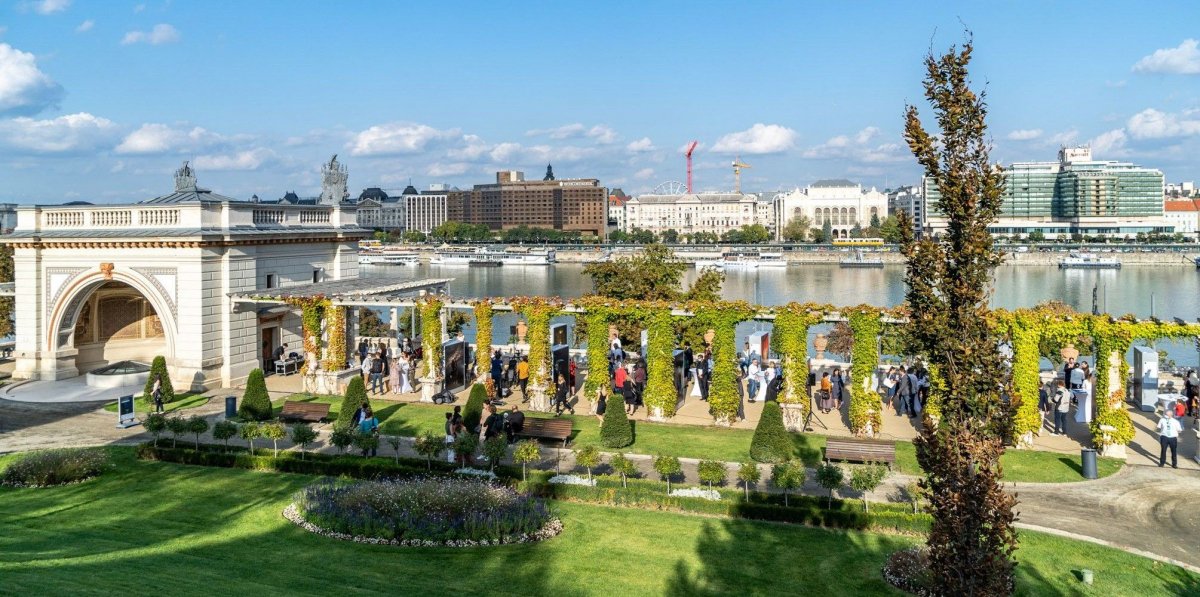







Hozzászólások
Log in or register to comment!
Login Registration